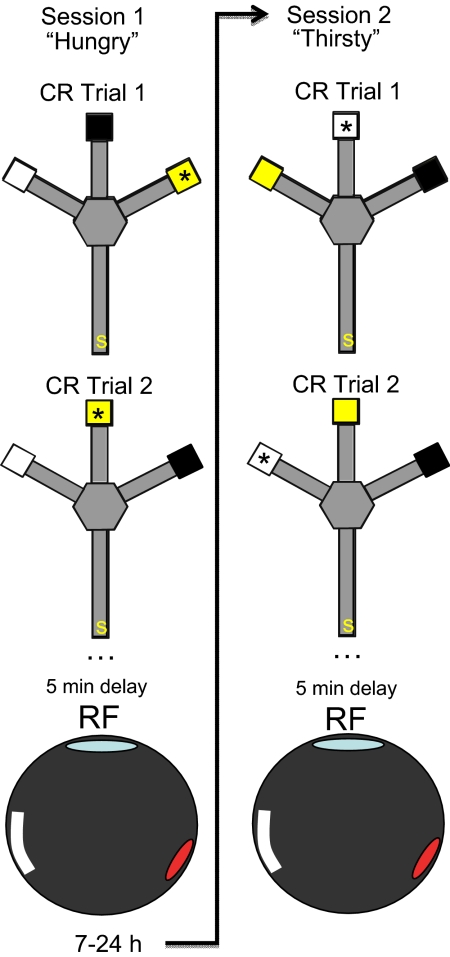Fig. 1.
Apparatus and design. In the CR task each rat was placed on the start arm (s) of a trident maze and was required to approach a specific, visually distinct goal box (*) to obtain the reward relevant to its current deprivation state. In this figure, a “hungry” rat could find food in session 1 by approaching the yellow box. Because the boxes were moved among the 3 goal arms after each trial, the spatial location of the box was irrelevant to performance. Unit activity was recorded as the rat performed the CR task for 25–35 trials (≈50 min). Five to 10 min after the CR session, an open box was placed on the Trident maze, and the same population of neurons was recorded as the same “hungry” rat foraged for randomly scattered chocolate sprinkles (RF: 8 min). The rat was returned to the vivarium (7–24 h) and the alternate deprivation state was induced (arrow). Session 2 followed the same procedure, but the now “thirsty” rat could find water by approaching the white goal box in the CR task, and find randomly scattered chocolate sprinkles in the RF task. Thus, the only difference between RF sessions was deprivation state. A complete experimental session had 4 recording sessions (2 states and tasks).

